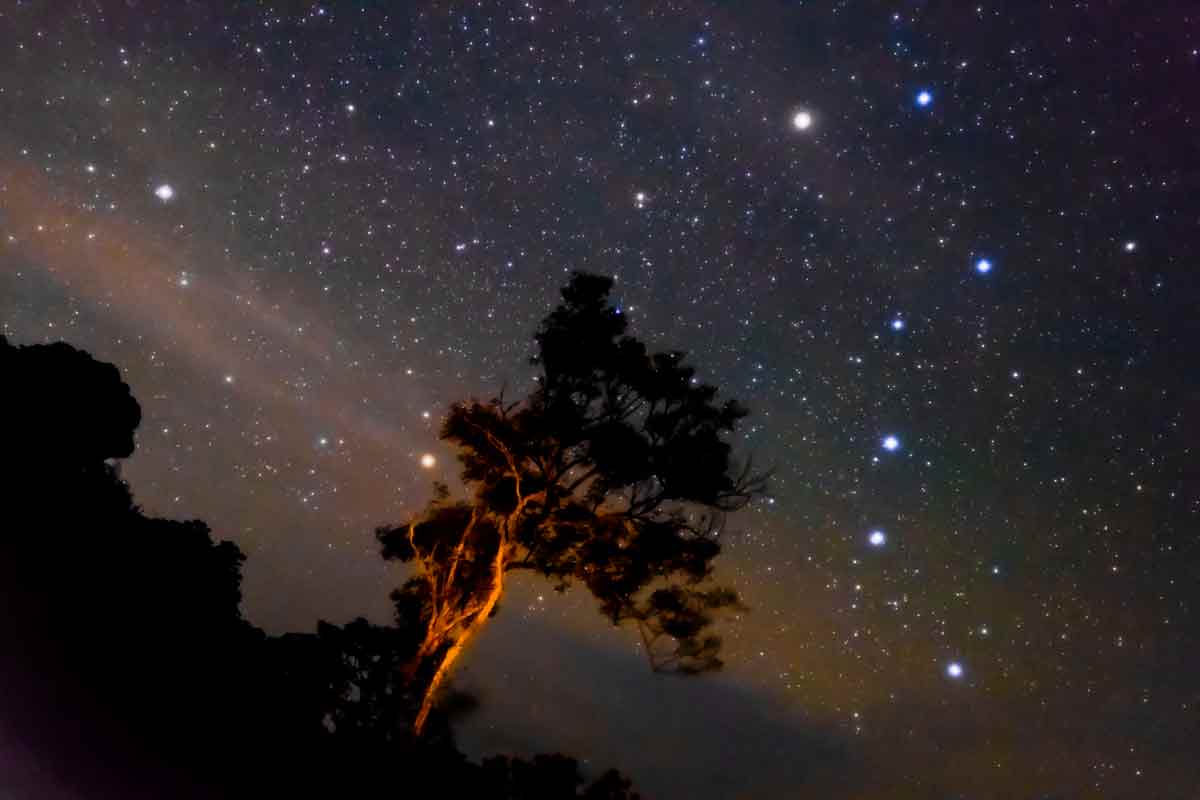Stellar Stories for Stargazing
Paideia class retells indigenous constellation stories.
Long ago, a bear was wandering around in the forest at night. In this time, trees could walk, but only out of sight of the Sun god, whom the trees feared. The bear, fearing the trees, ran away without apologizing. Out of anger the trees grabbed her by the tail and flung her into the sky, where she remains to this day, her long tail stretching out across the heavens; but bears as we know them only have short ones.
Anthro major Orion Pendragon ’24, a former science educator for the Pacific Science Center in Seattle, retold this Ojibwe tale last month in a Paideia class on indigenous constellation stories, titled “Sky Tonight.” (Like all classes in Paideia 2021, it was held remotely.)
The constellation the story refers to is also known as Ursa Major (Latin for big bear) and contains within it the distinctive pattern that may be familiar to you as the Big Dipper—one of the most recognized constellations across cultures. Permanently visible in the night sky. the Big Dipper serves not only as a pointer to the North Star, but also as the long tail of Ursa Major.
A Lakota/Dakota/Nakota tale describes Ursa Major as not a bear, but rather as a stretcher. This stretcher carries those who have departed along a trail of spirits to a final spiritual destination.
Some tales Orion tells are not only of stars, but of deep-sky objects. Deep-sky objects, despite sounding like something out of a sci-fi novel, are galaxies, nebulae, and star clusters, such as the Pleiades, also known as the Seven Sisters, a star cluster by the constellation Orion. To the Ojibwe, Orion is known as the Wintermaker, the celestial hunter whose appearance in the sky marks the beginning of the cold season.
These stories, of stretchers and hunters and bears, reflect the way different people see the night sky. Interestingly, far-flung cultures around the globe often see the same image. As Orion says, “looking at the stars is a very human thing.”
They led the Paideia class “in the hopes that people would feel inspired enough to share some of the stories they learned. To me, storytelling is an invaluable part of building community, something I would really like to see happen for Native folks at Reed.”
Paideia is Reed’s annual festival of learning, where students, faculty, alumni, and staff come together for a week in January to participate in classes led by and for Reedies. These classes are free and open to the Reed community for opportunities to learn and discover new topics that Reedies around the world are passionate about.
